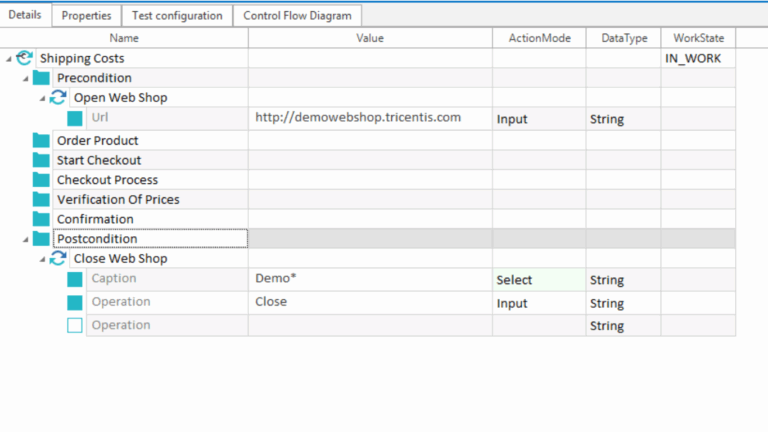It sounds as though scriptless test automation will fully replace the current script-based testing methodology. It promises rapid and easy test case creation, lower quality assurance (QA) costs, and simple QA methods that don’t call for special training.
In software development, there is a persistent tendency toward simplification and automation. Platforms without scripts fall under this category. These platforms give consumers easy-to-use tools and graphical user interfaces so they can create and automate test scenarios without writing any code. Thus, even those with little to no programming experience can take part in quality control operations.
There are a number of excellent Online QA certification courses that cover scriptless test automation, however, the typical operation of a scriptless platform is as follows:
- The user creates a test scenario and executes it manually to pass it.
- This user action is tracked by the platform, which then turns it into test code.
- The platform replicates previously recorded actions when a user runs the test.
- The platform declares the test as successful if the system behaves as predicted.
- The test fails if the system behaves differently from the scenario that was recorded and produces a different result.
- The user evaluates the unsuccessful situation, identifies the bug, and opens a support ticket.
On the basis of this recording and playback methodology, the most well-known scriptless test automation technologies include Perfecto, Katalon Studio, Selenium IDE, Cloud QA, Leapwork, and Selenium IDE.
The two main categories of Scriptless Test Automation are:
- No-code system: systems that don’t need users to write any code and instead utilise interactive graphical user interfaces to create test cases (GUIs).
- Low-code platforms that let users contribute their own scripts to test cases through GUIs
Low-code and no-code test automation were initially developed for online applications that needed a large number of tests of the same type to validate their usability across various browsers, displays, and devices. However, they are currently also employed in the creation of platforms for project management, mobile applications, and customer relationship management systems.
Platforms without scripts aid firms in accelerating testing and utilising a larger user base for QA. For instance, any employee of a company can use a no-code platform to build a test and convert it into an automated test case.
This gives QA experts, software development engineers in test (SDETs), and automation engineers more time to work on jobs that are more difficult.
Scriptless Test Automation methods are excellent for smoke tests, in-sprint automation, and some regression testing tasks because of their simplicity. However, they are unable to meet all QA requirements during product development. Because of this, choosing between scriptless and script-based test automation is not binary.
When to employ scriptless test automation
The finest scriptless testing platforms are in handy for:
1.Create test scenarios that are brief, easy, and repetitive.
Users have access to all they need on scriptless testing platforms to regularly test a system’s fundamental functionalities. These platforms deliver the same outcomes for straightforward tests as manual testing and script-based automation techniques. However, choosing Scriptless Test Automation solutions also enables you to lower the cost of QA tasks due to the quick production of tests and accessibility to users without programming knowledge.
2.A feature should be tested quickly.
If you don’t have enough time to test a feature before the product release or the end of the sprint, you can still ensure that it functions as intended by creating a test with a scriptless tool. This will save you time. After that, you can come up with enhancement plans that you can include in the subsequent sprint or release.
Verify a small portion of a huge product’s functionality. You can integrate new code into an existing testing strategy and cover new code with scriptless autotests if the development of a new feature doesn’t call for changes to the product’s core.
3.Code optimization for the application.
The product typically only undergoes internal changes during code optimization. Typically, the UI and GUI remain the same. When testing optimised code with script-based tests, QA professionals must modify the scripts every time the code is modified. The focus of scriptless testing is on GUI components; they are independent of the underlying code.
4.Work without needing QA specialists skilled in programming.
Within QA teams, programming-skilled QA specialists are extremely scarce, and they frequently work on several IT projects simultaneously. With little impact on the calibre of testing operations, choosing scriptless test automation enables you to avoid employing a human QA engineer or save the work of the engineers you already have.
5.Lower QA expenses.
Some project directors decide to decrease the quantity of QA operations and concentrate on software development when faced with the requirement to lower project expenditures. Since they are quicker and easier for a user with little to no programming experience to complete, scriptless QA activities are less expensive than manual and traditional testing. You may test the quality of your product while staying within the project budget with scriptless testing.
Conclusion
If you are a QA engineer, then Scriptless test automation is a vital concept that you must understand. You can learn more about QA by checking out the online QA training.





























